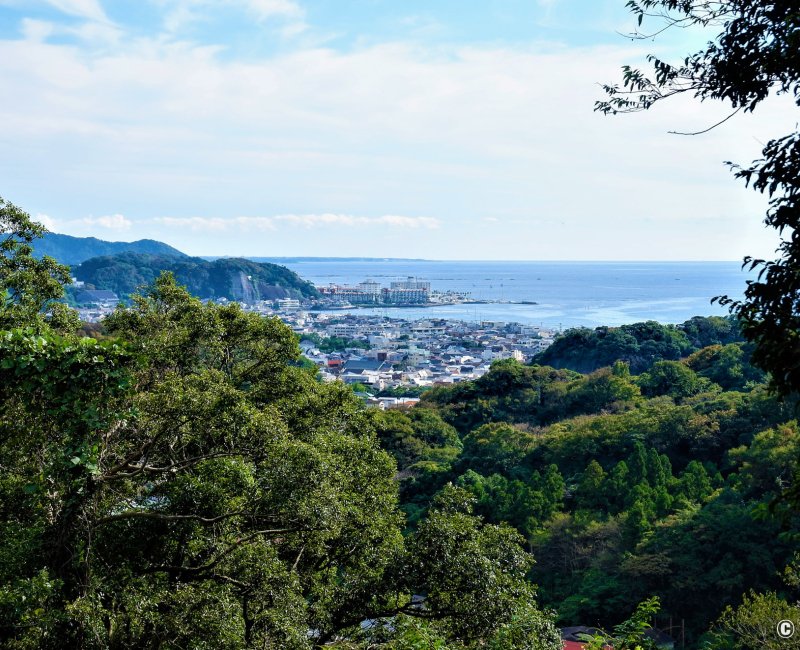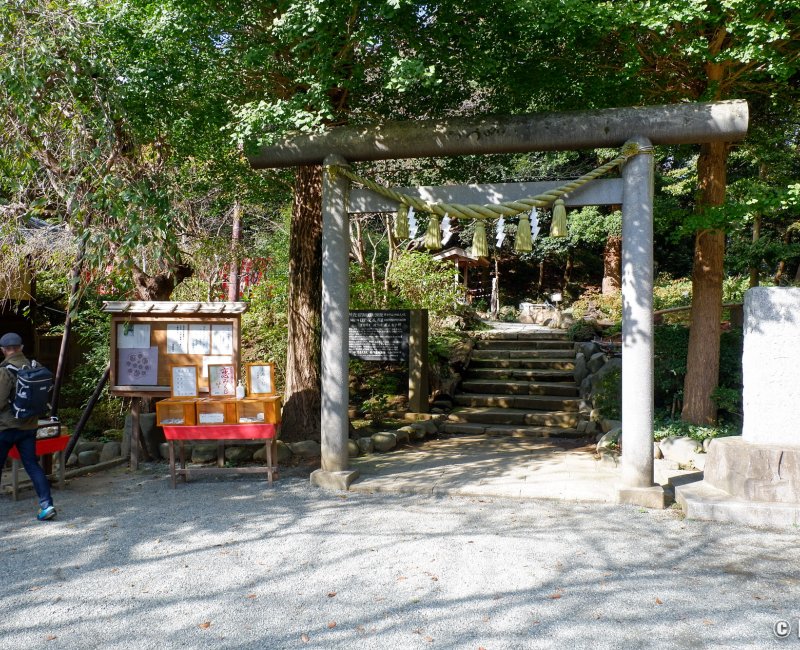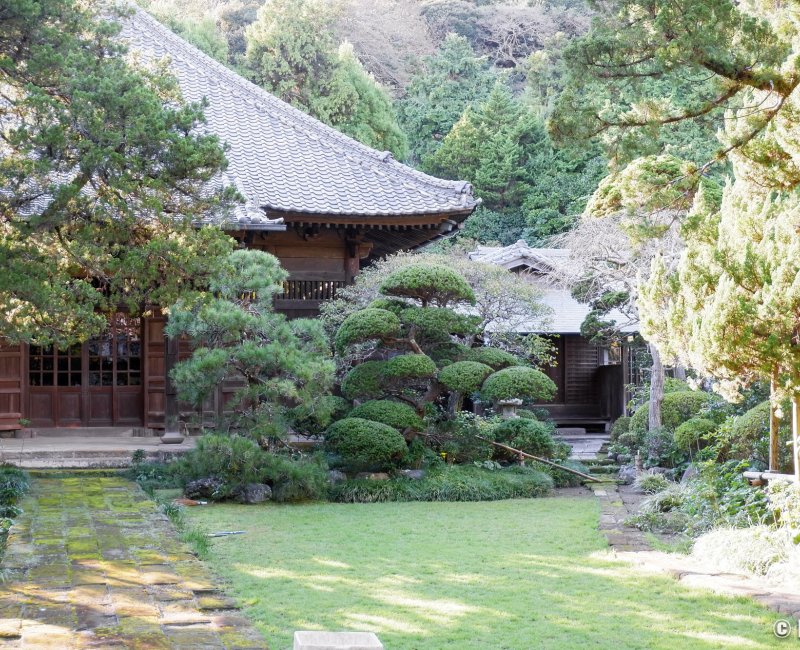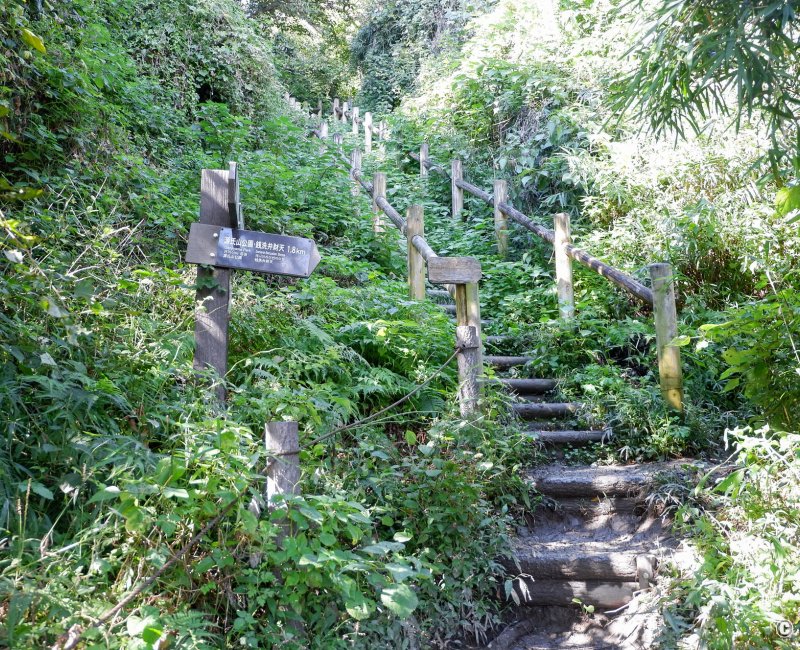In addition to its historical heritage as the shogunal capital of Japan between 1185 and 1333, Kamakura benefits from an ideal topography. Seaside resort within the peaceful bay of Sagami with a view of the Pacific, the city is surrounded on the land side by a string of forest hills which provide it with a little urbanized natural setting and pleasant to explore on foot.
3 hiking trails through the forest favor a original way to get around Kamakura which allows you to reach a certain number of more or less frequented spiritual sites. We thus move away from the crowd of tourists who concentrate in the main shopping streets of the city center to gain in serenity and spirituality.
The walk is suitable for all ages if you are in good physical condition. We also come across many Japanese retirees who are used to greeting all the walkers they meet; a nice way to make sure everyone is okay. We still make sure to leave well equipped, that is to say with proven walking shoes, a water bottle, a snack, a pocket Wi-Fi to stay reachable and mosquito repellent in summer. .
On the western heights of the city, the Daibutsu route leads to the Jochi-ji Temple close to Kita-Kamakura Stationto Kotoku-in famous for its large seated Buddha. The marked route of 2.5 kilometers takes place in 1h30 without rushing. Rendered impassable after the typhoon 🌀 Hagibis in 2019, the hiking trail was reopened in June 2020 but that of Gionyama, in the hills to the east, remains closed at the end of 2022, more than 3 years after the disaster. In this way, it is not recommended to take the hiking trails of Kamakura on the days following a heavy rainy episode because the slippery and muddy ground can be dangerous.
A path perched on the heights of Kamakura
We start the Daibutsu hike once we have passed through the Kotoku-in, along highway 32 and at the level of the old Daibutsuzaka gymnasium, abandoned since 2002 and under scaffolding in the summer of 2022. We spot a tunnel and a narrow staircase on the side aisle which rises rapidly to the heights. We find ourselves in a few minutes in the middle of nature, under the trees and far from the noise of the city.
The elevations are provided with steps made of logs or large stones. In summer, you can be surprised by the huge cobwebs Joro which dress the narrow passage dedicated to walkers. From its scientific name, the species Trichonephila clavata, unknown in Europe, has large legs and bright colors including a yellow and black stripe for the female. Fairly fearful, the Joro spider is content to just defend its territory and one of its bites therefore proves to be without danger for humans, except in the event of a particular allergy.
The dirt road then splits into several branches to visit the small temples and shrines nestled in the forest. Some indicative signs written in Japanese, English and Korean allow you to find your way around without getting lost. In the highest altitude part of the Daibutsu trek, one enjoys a view between the trees to observe the city skyline and beaches 🏖 from the Shonan coastto the nearby resort of Zushi at the entrance to the Miura Peninsula.

Small temples and shrines hidden in the forest
Here is a brief review of the spiritual or historical sites that can be seen during the Daibutsu trek.
Kuzuharaoka-jinja
Founded in 1887, at the request of Emperor Meiji (1867 – 1912), Kuzuharaoka-jinja consecrates the character of Hino Toshimoto who became, after his death in 1332, kami luck and learning, for his important deeds that marked the history of Japan. This scholar, servant of Emperor Go-Daigo (1288 – 1339), greatly participated in the overthrow of the Kamakura shogunate and was later executed for his treason.
Surrounded by the forest, the sanctuary presents at its entrance a high torii ⛩️ in stone and a sacred rock named Masaru Ishi 魔去る石 on which a cup (to be purchased for ¥100 (~€0.70)) is violently thrown so that it breaks, which aims to ward off evil spirits and bring good luck. His constructions are quite sober and discreet; we note in particular the tomb of Hino Toshimoto, a warehouse for a portable tank mikoshi as well as the main pavilion honden.

Genjiyama Park
In the continuity of the Kuzuharaoka sanctuary, the Genjiyama Koen park extends over an appreciable green space of 9.5 hectares laid out for walking. It was inaugurated in 1965 to commemorate the arrival in 1185 of Minamoto no Yoritomo (1147 – 1199), founder of the Kamakura shogunate. The tranquility of the park is rarely disturbed; at the beginning of spring the locals meet there under the cherry trees 🌸 in bloom to celebrate ohanami.
Zeniarai Benten and Sasuke Inari-jinja
We then join 2 rather unusual sanctuaries and therefore more popular with visitors. Dedicated to Benzaiten, one of the 7 Gods of Happiness in Japan, Zeniarai Benten is a perfect example of successful syncretism between Buddhism and Shintoism. People go there to wash their coins in the sacred spring as a wish for fortune.
Sasuke Inari-jinja is one of the so-called “cute” shrines, i.e. kawaii. In fact, we find there many fox statuettes 🦊divine messenger of kami Inari, scattered in the spiritual enclosure lost in the forest.
Jufuku-ji
Towards the end of the route, one of the forks leads the hiker to the Jufuku-ji temple, after crossing a buddhist cemetery. Quite mystical, the latter shelters inter alia burials in caves yagura like those of Hojo Masako (1157 – 1225), wife of Minamoto no Yoritomo, and their son Minamoto no Sanetomo (1192 – 1219).
Established in 1200, Jufuku-ji enshrines the original Buddha Shaka Nyorai as well as the shogun Minamoto no Yoritomo. It’s about oldest Zen temple in Kamakura and belongs to the Rinzai sect, like the great Kencho-ji. Under the direction of Zen master Eisai (1141 – 1215), the temple was built in place of the former residence of Yorimoto’s father. From the Chumon intermediate gate, you can access the Butsuden pavilion, closed to the public and whose last reconstruction dates back to 1664.

From Jufuku-ji temple, it is then easy to reach on foot, in just a few minutes, Jochi-ji and JR Kita Kamakura station, the starting point for discovering the great Zen temples in the north of the city.

